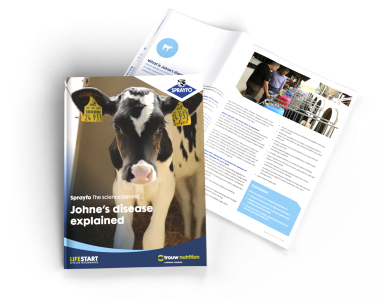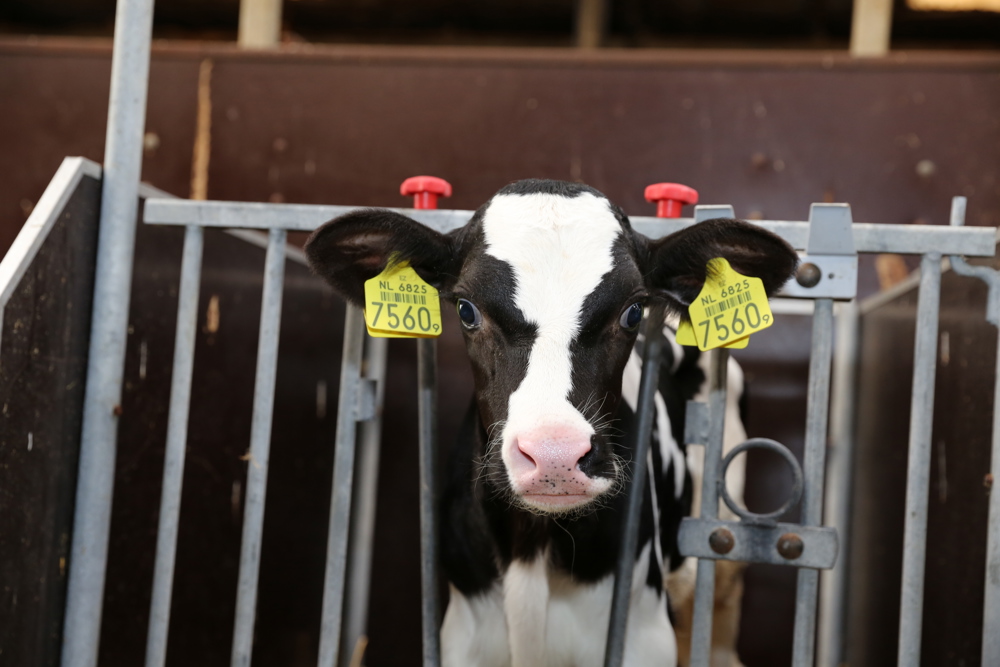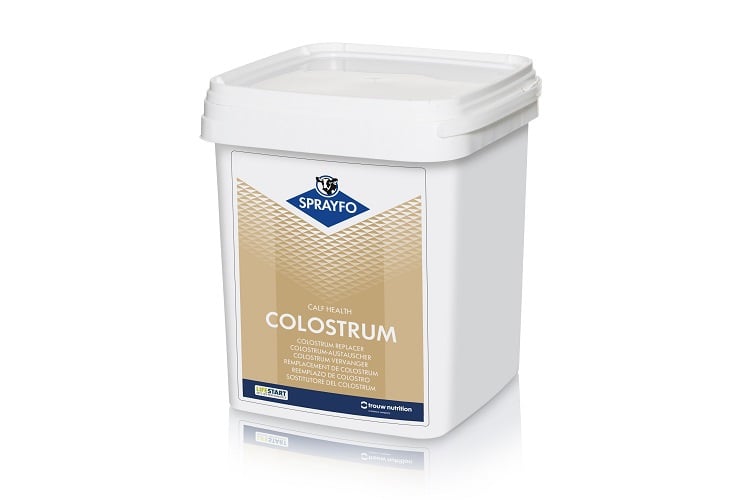La enfermedad de Johne es una enfermedad de desgaste crónico del ganado, causada por Mycobacterium avium, subespecie paratuberculosis (MAP). Si la enfermedad de Johne está presente en una granja lechera, potencialmente crea los siguientes problemas:
- La incidencia de la enfermedad de Johne una vez presente en una granja lechera puede ser relativamente alta y, como resultado, la mayoría de los terneros que se crían no alcanzarán su máximo potencial de producción.
- La enfermedad de Crohn en humanos a veces se asocia con la infección con Mycobacterium paratuberculosis, como resultado, los procesadores y los supermercados obligan a los agricultores a erradicar la enfermedad de Johne de su granja.
Los terneros lecheros generalmente se infectan con Mycobacterium paratuberculosis durante las primeras semanas de sus vidas a través del contacto directo o indirecto con heces de vacas infectadas o a través de la leche de vacas con enfermedad de Johne.
Vía de infección y signos clínicos de la enfermedad de Johne
Los signos clínicos de la enfermedad de Johne generalmente aparecen a partir de los 3-5 años de edad. Las vacas que sufren de la enfermedad de Johne tienen diarrea crónica, pérdida de peso, baja producción y baja fertilidad.
Los animales infectados con Mycobacterium paratuberculosis se pueden identificar mediante análisis de sangre, leche o heces. Ninguna de esas pruebas es muy confiable durante las primeras etapas de la enfermedad. Por cada vaca con signos clínicos hay 15-20 vacas aparentemente sanas que ya eliminan la bacteria de la enfermedad de Johne.
¿Cómo se introduce la enfermedad de Johne en mi granja?
La enfermedad de Johne se puede introducir en su granja agregando una vaca con la enfermedad de Johne al rebaño (para evitar esto, mantenga la granja cerrada y nunca introduzca un animal de otra granja) o mediante la transferencia de heces infectadas con Mycobacterium paratuberculosis de una granja infectada. Los visitantes frecuentes de múltiples granjas (asesores de alimentos, inseminadores, veterinarios, etc.) pueden potencialmente transportar heces infectadas de una granja a otra. La estricta higiene y bioseguridad son la respuesta a esta amenaza.
Una vez que la infección se introduce en una granja, pueden pasar varios años antes de que el primer animal infectado muestre signos clínicos. En este momento, la infección puede haberse propagado a otros animales. Por lo tanto, incluso en ausencia de casos clínicos de la enfermedad de Johne, ¡las medidas de bioseguridad para evitar la transferencia de bacterias entre animales en la granja tienen sentido!




 Seperate the young calves from the cows
Seperate the young calves from the cows Vaccination against Johne's disease
Vaccination against Johne's disease Advice for colostrum and milk feeding
Advice for colostrum and milk feeding Johne’s disease is a complex problem. Therefore:
Johne’s disease is a complex problem. Therefore:




